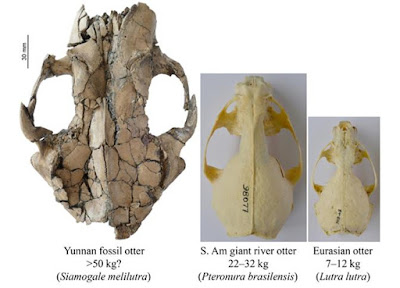 |
| Kryptonesticus deelemanae |
Abstract
This paper describes and illustrates a new genus and a new species belonging to the family Nesticidae based on morphology and supported by molecular data. The new genus, Kryptonesticus gen. nov., groups eight species spread from Bulgaria and Turkey to Croatia, including Montenegro, Bosnia and Herzegovina and Crete. As a result, seven new combinations are proposed: K. eremita (Simon, 1879) comb. nov., K. arenstorffi (Kulczyński, 1914) comb. nov., K. fagei (Kratochvíl, 1933) comb. nov., K. beroni (Deltshev, 1977) comb. nov., K. beshkovi (Deltshev, 1979) comb. nov., K. henderickxi (Bosselaers, 1998) comb. nov. and K. dimensis (López-Pancorbo, Kunt & Ribera, 2013) comb. nov., all ex Nesticus. Kryptonesticus deelemanae gen. et sp. nov. is described on the basis of both sexes and its phylogenetic relationships with closely related species are discussed based on morphological and molecular data (the cox1, rrn and H3 genes). In addition, the species of this new genus (except for K. eremita) are clear candidates for protection: they have highly restricted ranges and some of them show a high degree of adaptation to the subterranean environment.
Keywords: Nesticidae; taxonomy; caves; endemism; Dinarides
 |
| Fig 1. Habitus of Kryptonesticus deelemanae sp. nov. A. Male, body length 3.6 mm. B. Female, body length 4.3 mm. (Photos by M. Pavlek.) |
Class Arachnida Cuvier, 1812
Order Araneae Clerck, 1757
Family Nesticidae Simon, 1894
Kryptonesticus gen. nov.
Type species
Kryptonesticus deelemanae gen. et sp. nov.
Etymology: The prefix “Krypto”, from Ancient Greek κρυπτός (kruptós “hidden”), alludes to the long time it took
to diagnose this evolutionary line.
Distribution:
From Bulgaria and Turkey to Croatia, including Montenegro, Bosnia and Herzegovina and Crete. All
these species are known only from the type locality, or have small distribution ranges. K. eremita is an
exception; this species is linked to human activities and can be found in hangars, cellars and cottages. It
has been cited from France and Italy to Bulgaria and Turkey. It is a potentially invasive species, found
in an abandoned air-raid tunnel in Auckland, New Zealand (Vink & Dupérré 2011).
Krypyonesticus deelemanae gen. et sp. nov.
Etymology: The specific name is a patronym in honor of Christa Laetitia Deeleman-Reinhold, an important Dutch
arachnologist and a dear friend. Her work has vastly raised the knowledge of the cave spider fauna of
Dinarides. The species name is in possessive genitive.
Distribution: The new species is endemic to Croatia; it is distributed on Biokovo Mt in central Dalmatia, a coastal
region in Croatia. So far it has been recorded in 20 caves scattered through the whole mountain, from
the south-west sea side to the north-east continental side, from the 310 to 1640 asl (Fig. 6A). Data
on all records of K. deelemanae gen. et sp. nov. are given in Appendix 2. The distribution area of
K. deelemanae gen. et sp. nov. is more than 80 km away from that of K. fagei and more than 100 km
from that of K. arenstorffi (Fig. 6B).
Natural history: The type locality, Samogorska špilja, is a small cave with two entrances (Fig. 7). On the date of the
last collection, 23 Jan. 2016, the air temperature in the cave was 0.5°C with cold air streaming through
the cave, mostly near the cave floor. Spiders were found freely walking on the ceiling of the chamber
(probably avoiding the cold air flow at the bottom) and on the side walls of the cave. The temperature
in other caves where K. deelemanae gen. et sp. nov. is found ranges from 0 to 15°C. Some of those caves
are very small and are greatly influenced by outside conditions (like the type locality), while the others
are quite big, have a true cave microclimate and harbor diverse types of cave habitats (for example
Pretnerova jama, a 254-meter deep pit). No other nesticid species are found in caves on Biokovo Mt.
• Kryptonesticus eremita (Simon, 1879) comb. nov.,
• Kryptonesticus arenstorffi (Kulczyński, 1914) comb. nov.
• Kryptonesticus fagei (Kratochvíl, 1933) comb. nov.
• Kryptonesticus beroni (Deltshev, 1977) comb. nov.
• Kryptonesticus beshkovi (Deltshev, 1979) comb. nov.
• Kryptonesticus henderickxi (Bosselaers, 1998) comb. nov.
• Kryptonesticus dimensis (López-Pancorbo, Kunt & Ribera, 2013) comb. nov.
• Kryptonesticus deelemanae gen. et sp. nov.
Martina Pavlek and Carles Ribera. 2017. Kryptonesticus deelemanae gen. et sp. nov. (Araneae, Nesticidae), with Notes on the Mediterranean Cave Species.
European Journal of Taxonomy. 262; 1–27. DOI: 10.5852/ejt.2017.262
European Journal of Taxonomy. 262; 1–27. DOI: 10.5852/ejt.2017.262










































